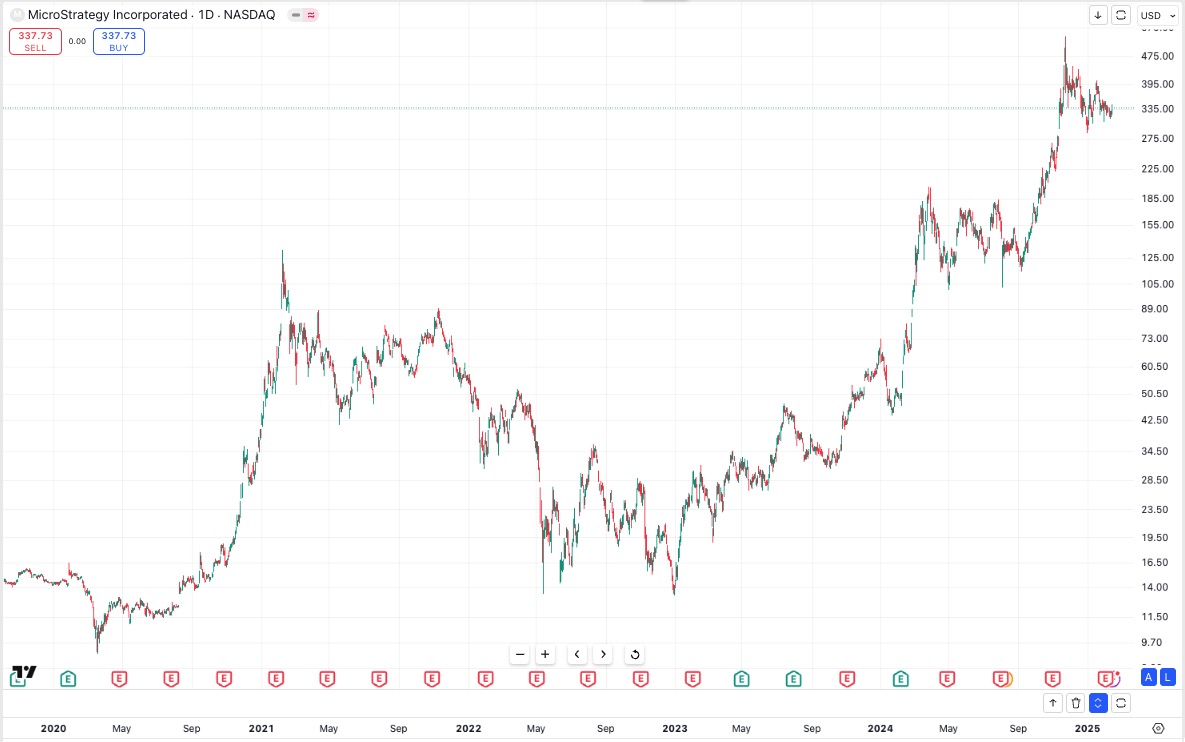The Bitcoin accumulation machine
Strategy (formerly known as MicroStrategy) has transformed from a business intelligence software company into the world’s largest publicly traded Bitcoin treasury company. By leveraging unique financial strategies, including ATM (at-the-market) offerings and convertible debt, Strategy has positioned itself as a dominant player in digital capital markets. This article explores the company’s Bitcoin acquisition methods, its yield generation strategies, the impact on per-share metrics, and the broader market dynamics of its financial model.
Bitcoin acquisition methods
ATM offerings
Strategy employs ATM offerings as a means to raise capital for Bitcoin purchases. Unlike traditional stock dilution, these offerings are accretive rather than dilutive because the funds raised are immediately converted into Bitcoin. This strategy effectively increases the company’s Bitcoin per share (BPS), ensuring shareholder value appreciation over time.
Convertible debt strategies
One of Strategy’s most effective tools is the issuance of convertible debt. The company has successfully leveraged this instrument to accumulate Bitcoin while minimizing financial risk. Convertible bonds allow investors to convert debt into equity at a predetermined price, ensuring that Strategy can raise capital at favorable terms.
- Zero-coupon and negative-coupon bonds: Strategy has pioneered the issuance of zero-coupon and potentially negative-coupon bonds, enabling it to raise capital at minimal cost.
- High demand: Due to strong investor appetite, Strategy’s convertible bond offerings have often been oversubscribed, allowing the company to scale its Bitcoin holdings rapidly.
Bitcoin yield and per-share metrics
Strategy’s accumulation model revolves around increasing Bitcoin yield and Bitcoin per share.
Bitcoin yield
Bitcoin yield is defined as the percentage change in Bitcoin holdings relative to assumed diluted shares outstanding. This metric is a key performance indicator (KPI) for Strategy, reflecting its ability to acquire Bitcoin at a rate that exceeds any dilution from equity issuance.
Recent performance
Between 2023 and 2024, Strategy increased its Bitcoin per share by 86.90%. The company targets an annual Bitcoin yield increase of 6-10%, but has often exceeded these benchmarks.
The flywheel effect: Compounding Bitcoin growth
Strategy’s financial model is based on a self-reinforcing flywheel:
- Raise capital through ATM offerings or convertible debt.
- Use capital to buy Bitcoin, increasing total holdings.
- Bitcoin price appreciation increases the value of holdings.
- Increased market cap attracts more capital inflows.
- Higher stock price allows for additional capital raises at better terms.
- Repeat the cycle, compounding Bitcoin per share growth.
This approach enables Strategy to continuously acquire more Bitcoin and compound its impact on the market. Unlike traditional firms, Strategy’s use of financial engineering effectively bridges Bitcoin with traditional finance (TradFi), allowing institutions that cannot hold Bitcoin directly to gain exposure through its securities.
Differentiation from speculative attacks
Some have likened Strategy’s approach to past speculative attacks on commodities, such as the Hunt Brothers’ attempt to corner the silver market. However, Bitcoin’s fixed supply mechanism prevents an oversupply scenario. Unlike silver, Bitcoin’s mining schedule is algorithmically controlled, ensuring that new supply cannot flood the market in response to demand. Strategy’s aggressive accumulation strategy is therefore structurally different and more sustainable over time.
Index inclusion and market impact
As Strategy continues to grow, its inclusion in major indexes like the NASDAQ 100 and S&P 500 accelerates its market exposure. This inclusion leads to passive investment inflows from institutional investors and ETFs, further fueling the capital raising flywheel. The more indexes include Strategy, the more its stock benefits from passive capital inflows, increasing its ability to acquire Bitcoin.

Risks and long-term sustainability
While Strategy’s playbook is highly effective, several risks remain:
- Bitcoin price declines: A prolonged downturn in Bitcoin’s price could challenge Strategy’s ability to maintain its aggressive accumulation model.
- Regulatory concerns: Governments may impose restrictions on corporate Bitcoin holdings or securities backed by Bitcoin, similar to historical actions against gold.
- Market liquidity: The demand for Bitcoin-backed securities could eventually plateau, limiting Strategy’s ability to raise capital at favorable terms.
- Key-person risk: Michael Saylor has been the driving force behind Strategy’s vision. Any leadership change could impact execution.
Conclusion
Through its strategic use of ATM offerings, convertible debt, and index inclusion, Strategy has mastered the art of Bitcoin accumulation while maintaining shareholder value. By continuously optimizing its Bitcoin per share and yield, the company is setting the stage to become the dominant player in digital capital markets. As Bitcoin adoption grows, Strategy’s model will likely serve as a blueprint for corporations looking to integrate Bitcoin into their financial strategies. However, ongoing risks and market conditions will determine the long-term sustainability of this aggressive financial playbook.